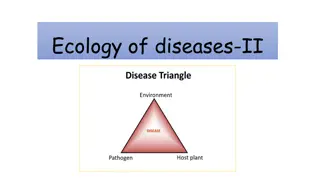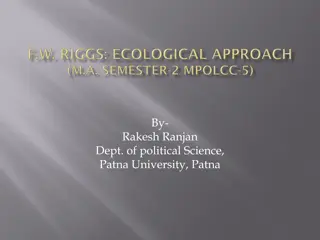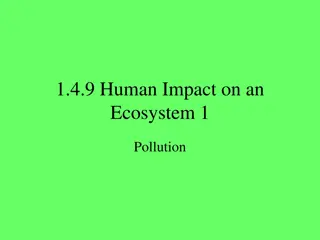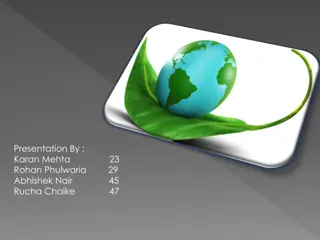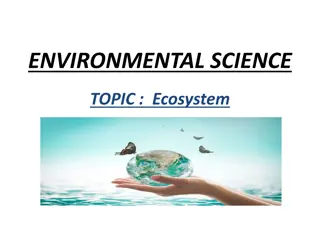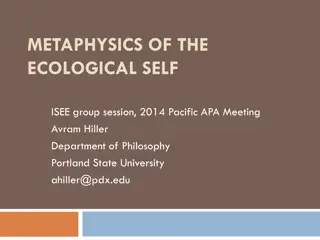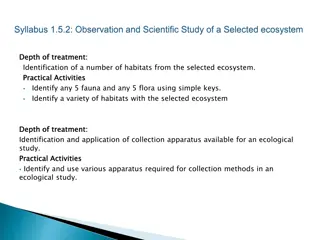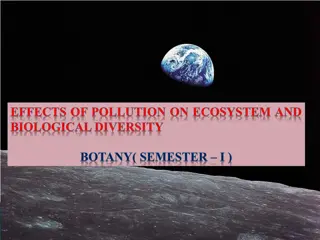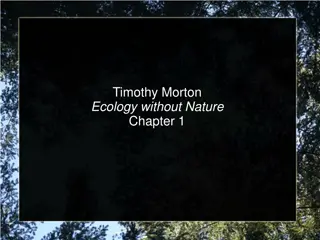Understanding Ecological Organization in the Environment
Explore the relationships among organisms within populations, communities, ecosystems, and biomes. Delve into the levels of organization in different environments, from populations to the biosphere. Learn about primary and secondary succession, pioneer species, and how environments form. Discover the distinctions between biomes, ecosystems, communities, and populations in the context of ecology.
Download Presentation

Please find below an Image/Link to download the presentation.
The content on the website is provided AS IS for your information and personal use only. It may not be sold, licensed, or shared on other websites without obtaining consent from the author. Download presentation by click this link. If you encounter any issues during the download, it is possible that the publisher has removed the file from their server.
E N D
Presentation Transcript
Ecology Overview Cornell Notes Ecological Organization PO 1: Identify the relationships among organisms within populations, communities, ecosystems and biomes. SWBAT- Compare and contrast the levels of organization in an environment.
Directions for Cornell Notes The orange question goes on the left side of your notes. Vocabulary and definitions marked in green go on the right side of your notes. Answer the summary questions at the end.
EQ: How do living things in the environment interact?
? Ecology- relationships of organisms to one another and to their physical surroundings
How do environments form? Primary succession- establishment and development of an ecosystem in an area that was previously uninhabited. Pioneer species- organism that is first to live in a previously uninhabited area. Secondary succession- reestablishment of a damaged ecosystem in an area where soil was left intact.
What are the levels of organization in Ecology?
Biosphere- All of the parts of our world. Land, air and water
Biomes- Regions of the world with similar climate (weather, temperature) animals and plants.
Ecosystem- Community of interacting organisms and their physical environment.
Community- Collection of organisms in a location interacting to varying degrees.
Population- Organisms of the same species that live in a particular geographical area.
What is the difference between niche and habitat?
Habitat- The natural home or environment of an animal, plant, or other organism
What is biodiversity? Biodiversity- The variety of life in the world or in a particular habitat or ecosystem .
How is a new species made? Speciation- Forming new and distinct species during evolution
Summary Questions 1. Put these in order for largest to smallest. Population, Community, Biosphere, Individual, Biome, Ecosystem 2. All the variety of life in the world is known as ____________________. 3. What is the difference between niche and habitat?




